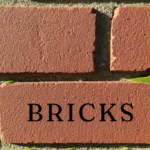Bricks are one of the oldest and most versatile building materials. Used for centuries across the globe, they continue to be a popular choice for construction projects of all kinds. This detailed guide delves into the world of bricks, exploring their classification, characteristics of good quality bricks, the ideal composition of brick earth, various forms available, BIS standards for testing, and common defects to watch out for.
Classification of Bricks
Bricks can be classified in two primary ways:

Based on Quality:
- First Class Bricks: These premium bricks are uniform in size, shape, and color (usually deep red or cherry). They possess sharp edges, a smooth texture with no cracks, and emit a clear ringing sound when struck. They are ideal for load-bearing structures and exposed walls.
- Second Class Bricks: Maintaining standard size and uniform color, these bricks may be slightly overburnt. They have a regular shape with minimal efflorescence (a white powdery deposit) and are suitable for internal walls and non-load-bearing applications.
- Third Class Bricks: These come in irregular shapes and sizes, with a light red color indicating underburn. While usable for non-structural purposes like internal partitions, they are not recommended for critical construction elements.
Based on Purpose:
- Common Bricks: The most widely used type, these are suitable for general construction purposes where high strength or aesthetics aren’t primary concerns. They have lower compressive strength and are typically used for interior walls.
- Engineering Bricks: Engineered for strength and durability, these boast high compressive strength, low water absorption, and excellent resistance to moisture and chemicals. Their uniform red color makes them suitable for exposed walls and demanding structural applications. They are further categorized as Class A, B, and C based on specific strength parameters.
- Facing Bricks: Designed for aesthetics, these bricks come in various textures, colors, and finishes. They are used for external walls and decorative elements, offering a visually appealing finish.
- Fire Bricks: Composed of materials with high heat resistance, these are specifically designed for furnaces, fireplaces, and other high-temperature environments.
- Glazed Bricks: These have a glazed coating that provides a smooth, impervious surface. They are often used for interior walls in areas with high moisture or requiring easy cleaning, like kitchens and bathrooms.
- Paving Bricks: Engineered to withstand heavy loads and external elements, these are ideal for walkways, driveways, and patios.
Characteristics of Good Bricks
When selecting bricks for your project, consider these key characteristics:
- Size and Shape: Good bricks should be uniform in size and have a well-defined rectangular shape. Standard brick dimensions in India are 190 mm x 90 mm x 90 mm (length x breadth x height).
- Colour: A uniform color, typically deep red or cherry, indicates proper burning. Avoid bricks with blotchy or uneven color, which may signify inconsistencies in the burning process.
- Texture: The surface should have a slightly rough texture, not excessively smooth. A smooth texture might indicate over-burning, reducing the brick’s ability to bond with mortar.
- Compactness: A good brick should be free from cracks, holes, air bubbles, or loose materials when broken. A compact structure ensures strength and durability.
- Compressive Strength: This refers to the brick’s ability to withstand pressure. For load-bearing structures, choose bricks meeting the BIS standards for compressive strength.
- Hardness: A good brick shouldn’t scratch easily with a fingernail but should produce a metallic sound when struck with a hammer.
- Soundness: Free from cracks or flaws, a good brick emits a clear ringing sound when struck. A dull thud indicates internal cracks or improper burning.
- Toughness: Bricks should be able to withstand some impact without breaking.
- Water Absorption: Good quality bricks have low water absorption rates, typically less than 20% of their dry weight. High absorption can lead to efflorescence and reduced durability.
Ingredients of Good Brick Earth
The quality of brick earth, the raw material used in brick production, significantly impacts the final product. Here’s a breakdown of the ideal composition:
- Clay: The primary ingredient, clay provides plasticity, allowing the brick to be molded into shape.
- Silica: Acting as a binder, silica helps the brick retain its shape during firing.
- Lime: Present in small quantities (5-10%), lime helps prevent excessive shrinkage during drying.
- Iron Oxide: Contributing to the brick’s red color, iron oxide also enhances strength and durability.
- Magnesia (MgO): In small amounts, magnesia improves the brick’s resistance to weathering and wear.
The Ideal Balance:
These ingredients work best when present in specific proportions. Here’s a rough guideline for a good brick earth composition:
- Silica: 50-60%
- Alumina (Al2O3): 20-30% (not mentioned previously, alumina is another component often found in clay and contributes to brick strength and heat resistance)
- Lime: Up to 5%
- Iron Oxide: 5-7%
- Magnesia: Small quantities
Harmful Ingredients:
While the above ingredients are essential for good brick earth, some materials can negatively impact the final product. These include:
- Organic Matter: Organic materials like leaves or twigs can cause cracks and uneven burning during firing.
- Pebbles and Gravel: Large particles disrupt the uniform structure of the brick, affecting its strength.
- Sulphur: Excess sulphur can lead to efflorescence (white deposits on the brick surface) and reduce the brick’s durability.
By ensuring a good balance of the right ingredients and minimizing the presence of harmful materials, brick manufacturers can create high-quality brick earth that translates to strong and long-lasting bricks for your building projects.
Different Forms of Bricks
Bricks come in various shapes and sizes to cater to specific construction needs. Here’s a look at some common forms:
- Standard Brick: This rectangular brick, with dimensions of 190 mm x 90 mm x 90 mm, is the most widely used type for general construction purposes.
- Modular Brick: Slightly larger than the standard brick, with dimensions of 215 mm x 102.5 mm x 65 mm, modular bricks offer faster construction due to their larger size.
- Facing Brick: Available in various shapes and sizes, facing bricks are designed for aesthetics and come in a wider range of colours, textures, and finishes. Common shapes include Norman (rounded corners) and Roman (rounded top and bottom).
- Bullnose Brick: These have a rounded or bullnose end, ideal for creating curved walls, corners, or columns.
- Paving Brick: Typically, thicker and stronger than standard bricks, paving bricks come in various shapes like interlocking, rectangular, and hexagonal, designed to handle heavy loads on walkways, driveways, and patios.
- Hollow Bricks: These lightweight bricks have hollow cores, reducing weight and improving thermal insulation. They are suitable for non-load bearing applications like interior walls and partitions.
- Frog Brick: These have a single rectangular indentation (frog) on one flat face. The frog helps with better grip while handling and allows for better mortar adhesion.
- Corner Brick: These pre-shaped bricks have angled corners, eliminating the need for cutting and ensuring a clean finish at corners.
- Special Shaped Bricks: For specific architectural details, bricks can be custom-made in various shapes like arches, keystones, and quoins.
Testing of Bricks as per BIS (Bureau of Indian Standards)
The Bureau of Indian Standards (BIS) lays down guidelines for brick quality in India. Here are some key tests conducted as per BIS standards:
- Compressive Strength: This test determines the brick’s ability to withstand pressure. The minimum compressive strength requirement varies depending on the brick’s intended use (e.g., common bricks – 3.5 N/mm², engineering bricks – Class A: 17.5 N/mm², Class B: 12.5 N/mm², Class C: 7.5 N/mm²).
- Water Absorption: This test measures the brick’s ability to absorb water. As mentioned earlier, good quality bricks have a water absorption rate of less than 20% of their dry weight.
- Shape and Size: Bricks are checked for adherence to standard dimensions and shape to ensure proper bonding and construction ease.
- Efflorescence: This test assesses the presence of white deposits on the brick surface, which can indicate the presence of soluble salts. Excessive efflorescence can damage the brick and surrounding mortar.
These tests ensure that bricks used in construction projects meet the required quality standards for safety and durability.
Defects of Bricks
Several defects can occur during brick manufacturing or storage. Here’s a breakdown of some common issues:
- Cracks: These can be caused by improper drying, overburning, or handling during transportation. Cracks can compromise the brick’s strength and make it susceptible to further damage.
- Warps: Bricks that are not properly shaped or dried can develop warps, leading to uneven walls and construction difficulties.
- Bloating: Caused by the presence of impurities or uneven burning, bloating results in the brick expanding and becoming misshapen.
- Calcareousness: Excess lime content can lead to white patches on the brick surface, reducing its strength and aesthetics.
- Improper Firing: Under-burning results in weak bricks with poor water resistance. Over-burning makes them brittle and susceptible to cracking.
- Excessive Efflorescence: This can be caused by the presence of soluble salts in the brick earth or improper drying. It can damage the brick and surrounding mortar.
By understanding these classifications, characteristics, testing methods, and potential defects, you can make informed decisions when selecting bricks for your construction project. Remember to choose bricks that comply with BIS standards and are suitable for the intended application.
Read also: STITCHING CRACKED BRICK WALLS – A COMPREHENSIVE GUIDE






1 thought on “Bricks, Classification of Bricks.”